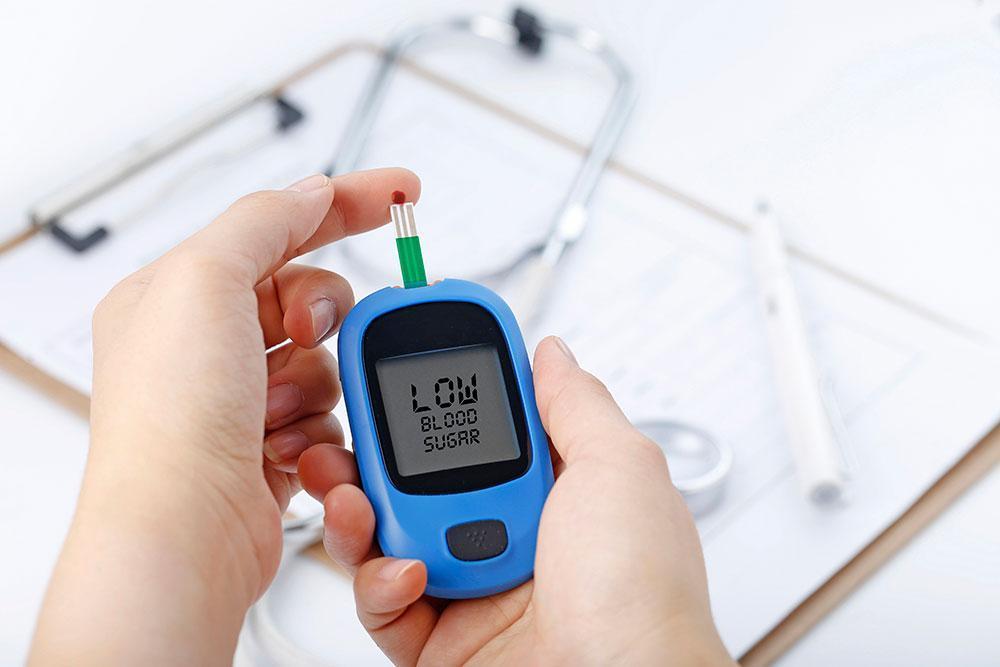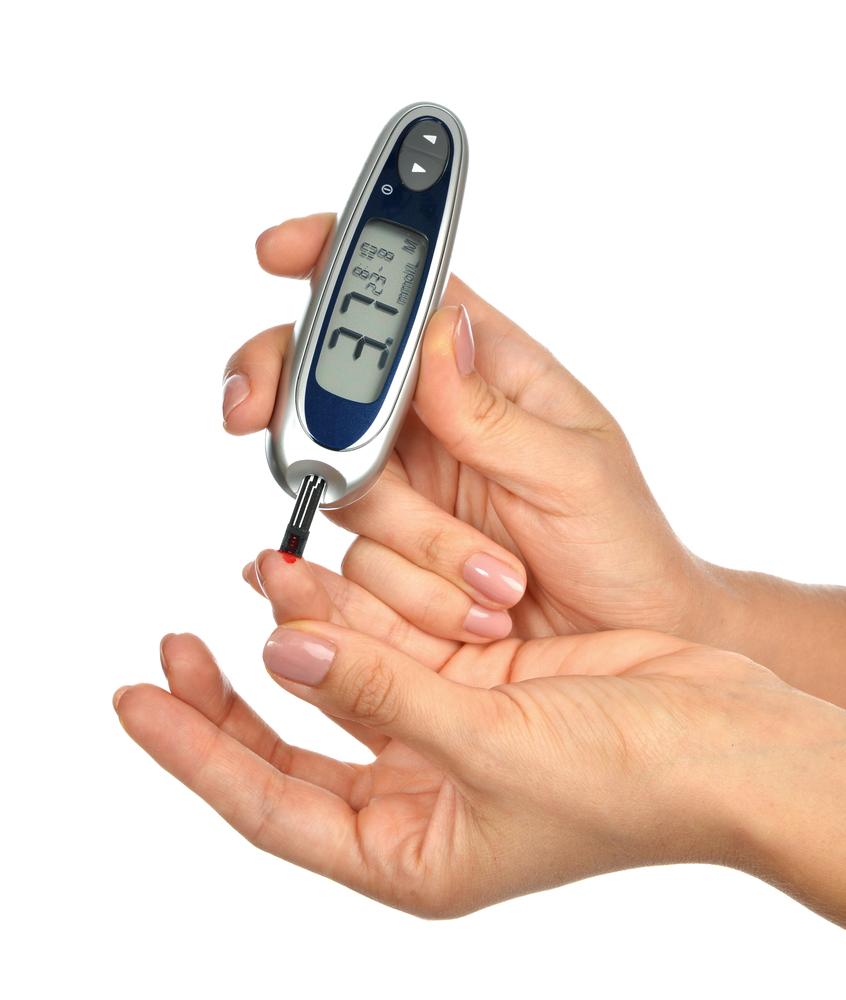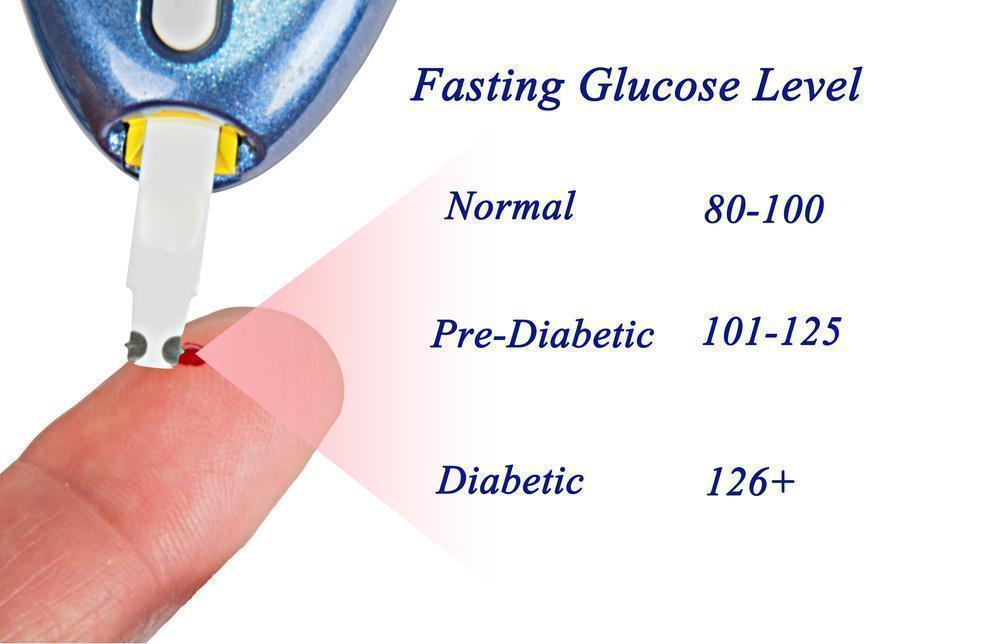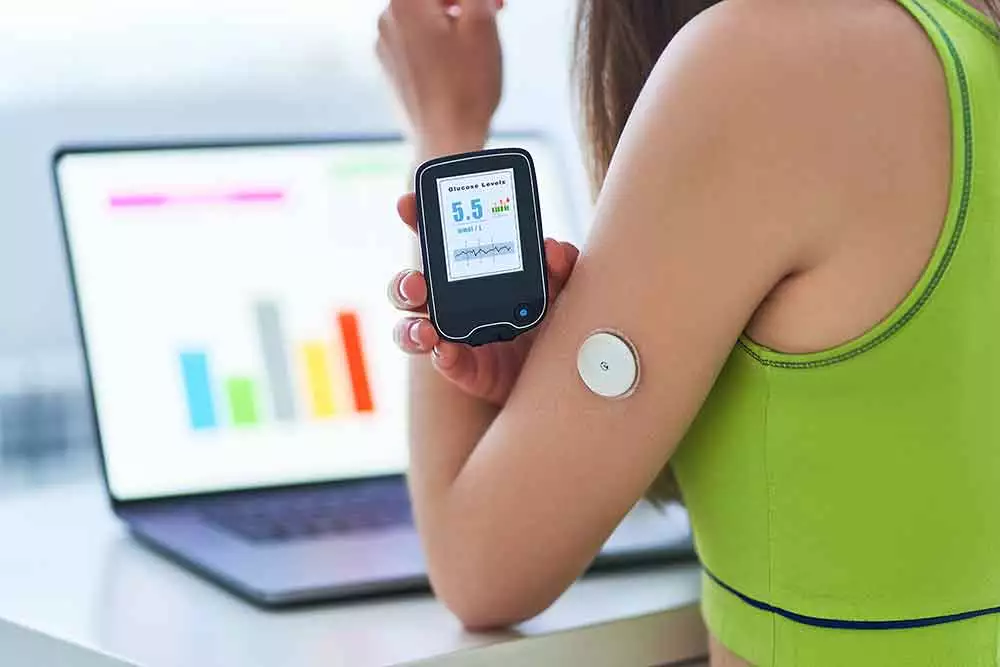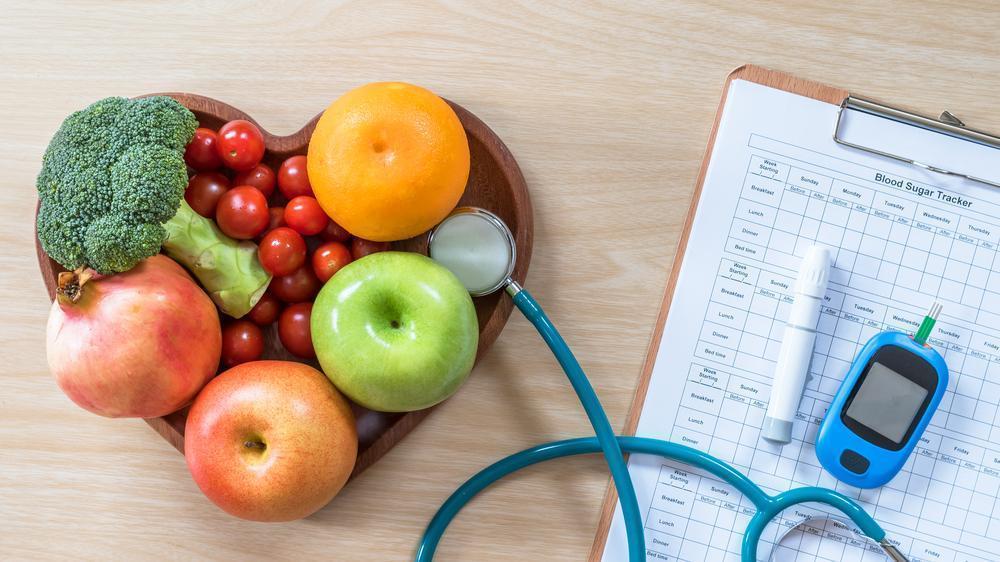Last updated on May 11th, 2022
Testing for blood sugar levels at home is the easiest and most affordable way for diabetics before it brings about problems. This is helpful as diabetes does not always lead to signs, particularly in the early phase. Read this blog to know how to test for diabetes at home.
For individuals already diagnosed with this medical condition, a simple home blood glucose test works great to enable them how to manage their blood glucose levels. A home test could even be lifesaving as the risk of associated complications can be prevented. Diabetic complications might be kidney problems, heart problems, or nerve damage. Diabetes management involves testing the blood glucose levels and ketones in the urine when needed.

Monitoring Diabetes
Blood glucose testing is an essential component of diabetes management. When a person has been diagnosed with diabetes, self-testing his or her blood sugar (blood glucose) plays a key role in managing the condition and avoiding the risk of associated complications. Blood glucose can be tested at home using a handy electronic device named a blood glucose meter with a small blood drop. Also, a device named continuous glucose monitor (CGM) is equipment to check blood sugar levels that can be used for testing.
As per the Centers for Disease Control and Prevention (CDC), normal blood sugar levels range between 70 and 140 mg/dL. Low blood glucose (hypoglycemia) is the condition when glucose levels go below 70 mg/dL, and high blood glucose (hyperglycemia) is when the levels go beyond 140 mg/dL.
Also Read: Self Monitoring of Blood Glucose

Why Testing for Blood Glucose?
Testing the glucose level in the blood is the finest way to detect how well diabetes is under control. A record book of the daily sugar counts can assist a person notice how food, lifestyle (including exercise), and anti-diabetic medications affect his or her blood sugar. The doctor can make modifications in the diet plan, physical activity routine, or the dose of medications. And these modifications can depend on the levels of blood glucose either too low or too high. Thus, it’s important to take the record book along whenever a person visits his or her healthcare provider.
Blood glucose testing offers helpful information about diabetes care, it can help a person:
- Detect glucose levels in the blood that are high or low.
- Check the effect of anti-diabetic medications on glucose levels.
- Identify how diet and physical activity have an impact on blood sugar levels.
- Track a person’s progress in reaching his or her overall treatment goals.
- Be aware of how other factors, like stress or any underlying disease, affect blood glucose levels.
Also Read: Random Blood Sugar Level Chart
Blood Sugar Limits
Blood sugar ranges can be variable for every individual and might modify all through the day. The doctor will inform you which range is beneficial for you.
The test results are greater than the standard limits (above 100 mg/dl in excess of the general results) for over 2 days for an unidentified reason. The glucose level in the blood is low (under 70 mg/dl) over twice a week.
The suggested range of blood sugar for diabetics (depending upon plasma glucose):
- Prior to meals: 80 to 130 mg/dl
- 2 hours after a meal: less than 180 mg/dl
- Prior to bedtime snack: 100 to 150 mg/dl
Also Read: Ways to Lower A1c Levels
When is Testing Required?
The concerned healthcare provider can speak out about how often blood sugar levels need to be checked. Testing frequency generally is based upon the type of diabetes and the treatment plan.
How to Test for Type 1 Diabetes at Home
The physician may suggest blood sugar testing 4-10 times per day if a person has type 1 diabetes. He or she might require testing:
- Before bed
- More frequently when a person is sick
- Before meals or snacks
- More frequently if a person begins any new medicine
- Before and after doing any physical activity
- More frequently if a person modifies his or her daily routine
- During the night (at times)
Also Read: Winter Food For Diabetes
Type 2 Diabetes
If a person is on insulin to manage his or her type 2 diabetes, the concerned doctor might suggest blood sugar testing numerous times in a day, based on the type and quantity of insulin a person uses. Testing is generally advised prior to meals and at bedtime if a person is using multiple daily injections. Testing is needed only prior to breakfast and dinner if intermediate- or long-acting insulin is being used. If a person can manage type 2 diabetes using non-insulin medicines or with the help of diet and exercise alone, then testing is not needed on a daily basis.
Performing Test For Diabetes at Home
Blood sugar tests are available in varying forms, but they all serve the same purpose: to give information about what the glucose level is at that time. A lot of home tests require:
- a glucose meter
- a lancet (which is a small needle)
- a lancing or lancet device (which holds the needle)
- test strips
Some general steps following a home test:
- Hands must be properly washed.
- A lancet is then placed into the lancet device.
- A new test strip is placed into the glucose meter.
- A finger is then pricked using a lancet.
- A drop of blood is then put onto the test strip and the results come in the glucose meter.
Results usually come within seconds. In some glucose meters, a person requires to be sure about the code on the strip to get matched with the code on the meter. Also, one must be sure of checking the date mentioned on the strips occasionally to ensure they aren’t outdated.
Also Read: Galvus Met Tablet For High Blood Sugar
Tips for Precise Testing of Diabetes at Home
- The fingers conventionally deliver the most precise results. Few tests let a person prick his or her thigh or arm, but the person must discuss with a physician before doing so. A physician can suggest some tests in a day if a person is on insulin (the exact number is based upon the type and quantity of insulin he or she is taking).
- It’s good to discuss with the doctor if and how often a person can check blood sugar at home if the person is not using insulin.
- Testing can be done before and after meals to examine how diet has an impact on blood glucose. It’s particularly significant to test after consuming simple carbs or sugary foods to ensure that the sugar levels are not too high.
- Also, it’s very important to test whenever a change is made in the treatment plan or when a person feels sick.
- A blood sugar chart for keeping track of blood sugar is essential for recording the results. Tracking can be done on paper or electronically. This information can be helpful for a person in determining patterns and potential issues.
Charts should be saved and should be taken to the doctor every time a person visits the doctor. While writing down the test results, also make sure to note:
- the time and date of the test
- any drugs a person is taking along with their dose
- whether the test was done before or after having food
- foods person is consuming (if after a meal, write about the carb content of that specific meal)
- any exercises a person did that day and when he or she did them
Also Read: Hba1c test
Home Testing Versus Medical Testing
Can you self-test for diabetes? Self-monitoring the glucose levels is critical for determining the extent of diabetes each day. It’s irrational to believe that some tests every year (at the physician’s office) can deliver a precise interpretation of the medical condition as sugar levels vary all through the day. On the other hand, this also doesn’t indicate that home tests can replace regular preventive testing.
Along with the self-monitoring at home, a physician can advise an A1c home test. This test examines how the sugar levels have been averaging over the last 2-3 months. A1c tests are done up to 4 times per year. Regular laboratory tests are also great for a person in determining how well the diabetes is under control. Also, these tests determine the person, as well as his or her healthcare team, decide how often home tests can be used and what the target reading must be.
Also Read: Can High Blood Sugar Make You Tired?
How Does Blood Sugar Testing Aid in Diabetes Management?
Blood sugar testing is a great way to control diabetes in several ways:
- Informing food varieties as well as portion quantities.
- Helping medicine dosing choices.
- Detecting episodes of high or low blood sugar levels.
Consecutively, this may give rise to:
- A decrease in HbA1c (better lasting glycemic control).
- Reduced risk of severe diabetic complications.
- Lowered depressive signs.
- Better assurance in diabetes care.
Summary
Can you measure blood sugar at home? Testing blood glucose is a vital part of a diabetes care plan. Based on the patient’s current condition, he or she may need to visit the doctor numerous times a month for formal testing. Self-monitoring the sugar levels can also be important in diabetes treatment. Testing the individual levels lets a patient understand how to manage blood sugar at any time of the day or no matter where the person is. A person can go for diabetes home tests if he or she experiences type 1 diabetes, type 2 diabetes, prediabetes, or any signs of diabetes. By regularly monitoring the blood sugar levels, a patient can find out problems in the current diabetes care.
A blood glucose monitor is quite necessary for maintaining overall health. The CDC proposes that if the readings are abnormally low (under 60 mg/dL) or high (beyond 300 mg/dL), then medical help is needed right away.
FAQs:
What tests can I do at home?
- Blood test: it measures the quantity of sugar in your blood. It also helps in understanding if your diet, exercise, and medications are effective in controlling your blood sugar.
- Urine test: The urine test finds out ketones in your urine.
Can I rinse out sugar by having water?
It is recommended that drinking six to eight glasses of water daily for oxygen to flow generously in your body. This also assists the kidneys and colon in getting rid of waste. Also, flushes out too much sugar from your body.
How many hours of fasting are needed before a sugar test?
Home sugar test needs a 12-hour fast. You must wait to eat and/or consume a hypoglycemic agent (insulin or oral drug) until after the test is done.
Is it good to have water before the home sugar test?
How soon is the testing required after waking up?
A lot of individuals check their sugar levels when they first wake up, prior to having food, and 2 hours after food consumption.
References:
- https://my.clevelandclinic.org/health/diagnostics/11730-diabetes-home-testing
- https://www.healthline.com/health/diabetes/home-tests#testing
- https://www.medicalnewstoday.com/articles/317224
- https://www.mayoclinic.org/diseases-conditions/diabetes/in-depth/blood-sugar/art-20046628
Last Updated on by Dr. Damanjit Duggal
Disclaimer
This site provides educational content; however, it is not a substitute for professional medical guidance. Readers should consult their healthcare professional for personalised guidance. We work hard to provide accurate and helpful information. Your well-being is important to us, and we value your feedback. To learn more, visit our editorial policy page for details on our content guidelines and the content creation process.

 English
English
